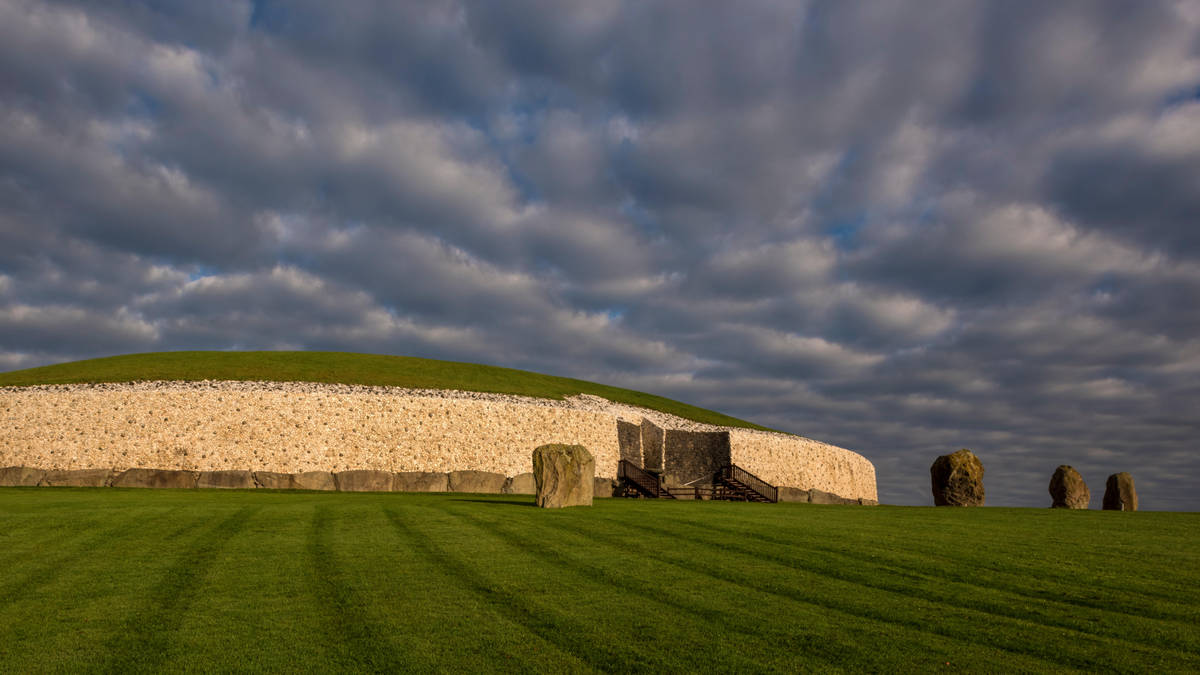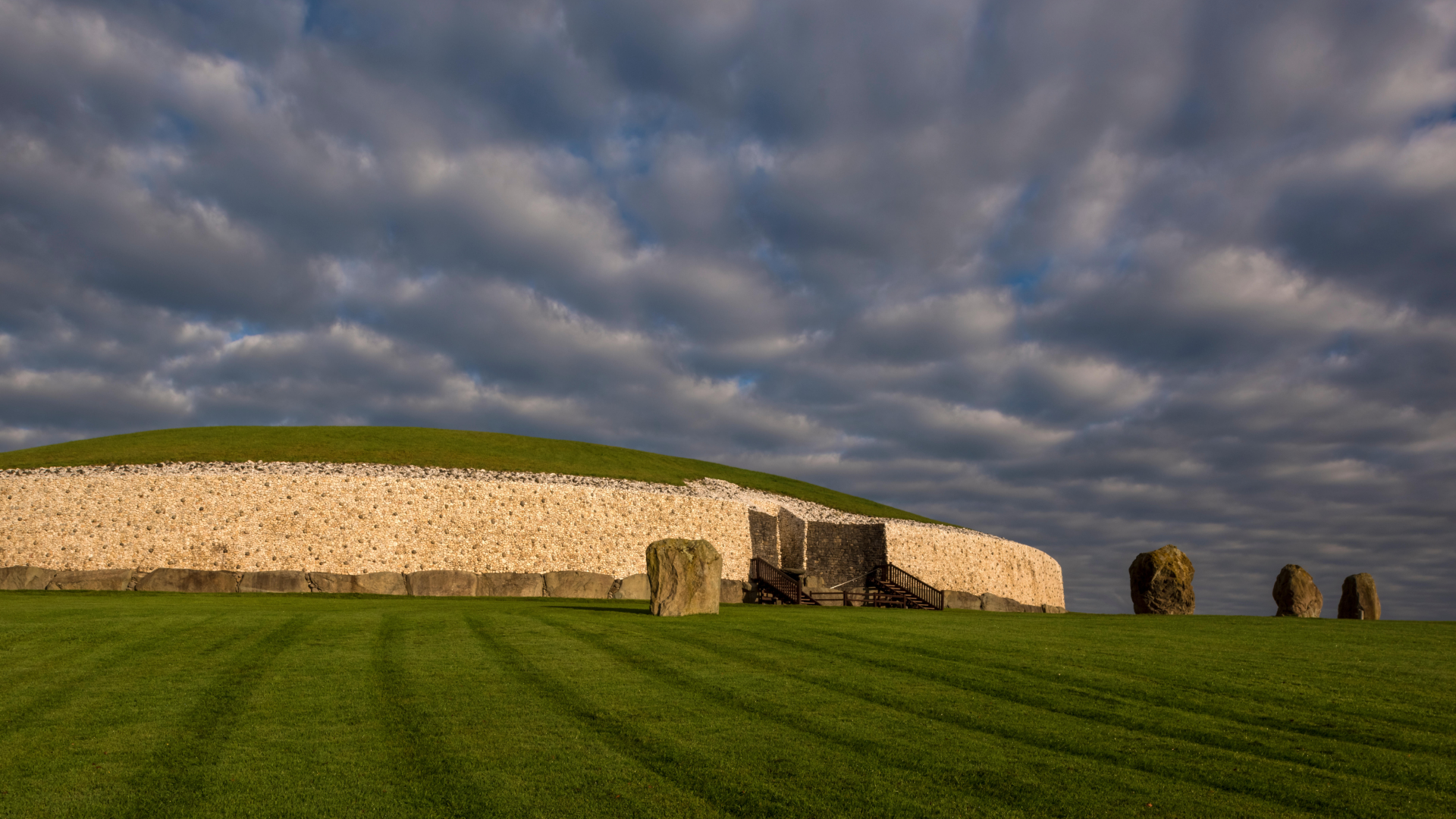The ancient DNA of a man buried in a monumental Stone Age tomb in Ireland revealed he was born of incest 5,000 years ago. But this fact doesn’t mean he was a “god-king” as previously claimed, according to a new study.
“Nothing in the archaeological record from Neolithic Ireland indicates that ‘kings’ — or any sort of royal hierarchy — existed at the time,” study lead author Jessica Smyth, an associate professor of archaeology at University College Dublin, told Live Science in an email. “It’s a social category from a much later time period that’s been inappropriately applied.”
In a study published Tuesday (June 24) in the journal Antiquity, Smyth and colleagues presented a new interpretation of the fragmentary skeleton of a man buried at Newgrange, calling into question the assumption that his inbred parentage meant he was part of an elite dynasty.
Built around 3100 B.C. in northeastern Ireland and rediscovered in 1699, Newgrange is a large tomb with an inner passageway that leads to a burial chamber. Skeletons discovered in the Newgrange mound were disarticulated, meaning there were no undisturbed burials of whole individuals but rather fragments of people whose remains were likely moved into the mound some time after death.
An analysis of ancient DNA from Newgrange skeletons was done in 2020, and researchers were surprised to find the skull bone of an adult male (NG10) whose parents were first-degree relatives — likely brother and sister. Because this kind of incest is nearly a universal human taboo, that research team searched across cultures for an explanation, settling on the idea that brother–sister marriage was sometimes seen as acceptable among royal families headed by “god-kings,” such as in ancient Egypt and the Inca in Mesoamerica.
But calling NG10 a “god-king” because of his parentage and his placement in the Newgrange tomb is problematic, Smyth and colleagues wrote in the new study.
Related: Early Celtic elites inherited power through maternal lines, ancient DNA reveals
“What we’re drawing attention to is the fact that incest is — so far — a unique occurrence in Neolithic Ireland and Britain,” Smyth said, “and that claiming it represents a dynastic elite is an over-interpretation.” In fact, there is very little evidence of social inequality in Neolithic Ireland (4000 to 2500 B.C.), according to the study.
The bones of NG10 were found in a small recess within the burial chamber but, Smyth and colleagues argue, this does not necessarily mean he was buried there or that it was a special location within the tomb.
“Given the disturbance inside of Newgrange over the past 300-plus years, we have no real way of knowing where that skull fragment originated from and if NG10’s parentage was known to others or remained hidden,” Smyth said.
In a previous study published in April, the same research team on the new paper argued that Newgrange and other megalithic monuments like it — while certainly impressive — were more likely to have been the resting place for a whole community rather than just a local dynasty.
Selection criteria for burial in Newgrange are not clear, Smyth said, as newborn infants and older people, men and women, and differently abled people are among those buried in the mound.
“It’s safe to say that the final resting place of most people in the Neolithic was not in a megalithic monument,” Smyth said, “but we’re still figuring out why.”





















